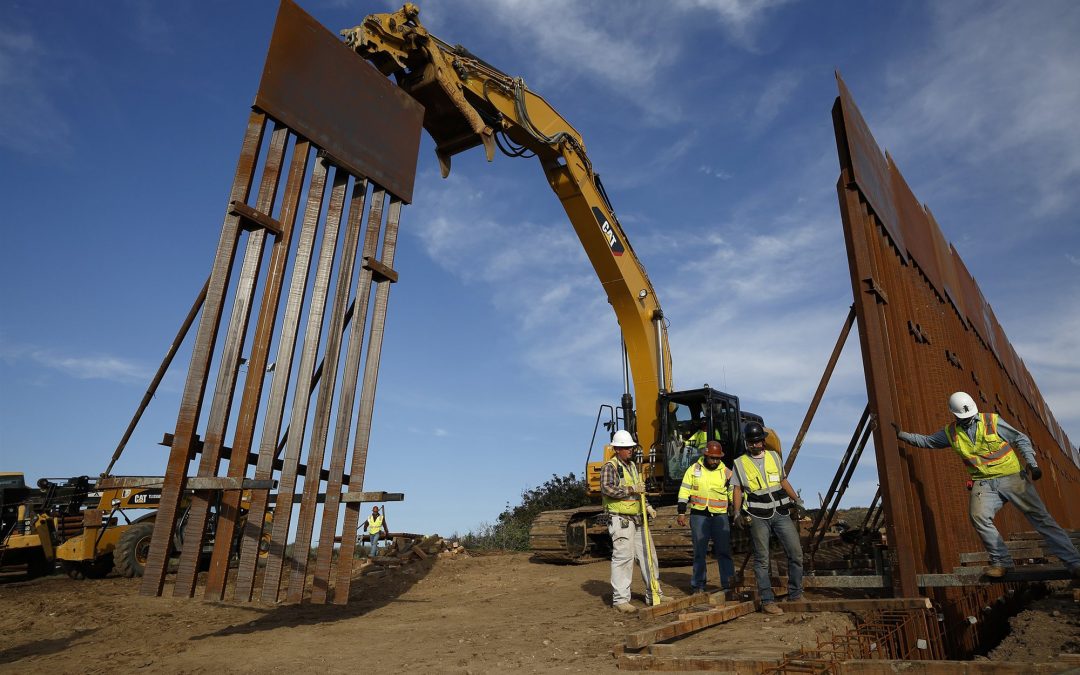Against the advice of many in his own party, President Trump declared a national emergency at the border toay to access billions of dollars to build a border wall that Congress refused to give him.
Trump said he would sign the declaration to protect the country from the flow of drugs, criminals and illegal immigrants coming across the border from Mexico, which he characterized as a profound threat to national security.
“We’re going to confront the national security crisis on our southern border and we’re going to do it one way or the other,” he said. “It’s an invasion,” he added. “We have an invasion of drugs and criminals coming into our country.”
But as he sought to deny that he was taking action because he could not persuade Congress to give him the money, he may have undercut his own argument that the border situation required urgent unilateral action.
“I didn’t need to do this, but I’d rather do it faster,” he said. “I want to get it done faster, that’s all.”
Sounding alternately defensive and aggrieved, Trump refused to accept that he lost his two-month drive to press Congress to give him the border wall money he demanded even as he criticized former Speaker Paul Ryan for failing to provide the funding when Republicans controlled the House.
Trump’s speech and answers to questions were replete with misinformation and, when challenged by reporters, he refused to accept statistics produced by his own government that conflicted with his narrative.
“The numbers you gave are wrong,” he told one reporter. “It’s a fake question.”
The border emergency declaration enables Trump to divert $3.6 billion budgeted for military construction projects to the border wall, White House officials said.
Trump will also use more traditional presidential budgetary discretion to tap $2.5 billion from counternarcotics programs and $600 million from a Treasury Department asset forfeiture fund.
Combined with the $1.375 billion authorized for fencing in a spending package passed by Congress on Thursday night, Trump would then have about $8 billion in all to advance construction of new barriers and repairs or replacement of existing barriers along the border this year, significantly more than the $5.7 billion that Congress refused to give him.
Trump’s decision incited instant condemnation from Democrats and some Republicans, who called it an unconstitutional abuse of his authority.
“This is plainly a power grab by a disappointed president, who has gone outside the bounds of the law to try to get what he failed to achieve in the constitutional legislative process,” Speaker Nancy Pelosi of California and Senator Chuck Schumer of New York, the minority leader, said in a joint statement.
The two vowed to try to overturn the decision, appealing to Republicans to join them.
“The president is not above the law,” they said. “The Congress cannot let the president shred the Constitution.”
House Democrats plan to introduce legislation to block the president’s move, which could pass both houses if it wins the votes of the half-dozen Republican senators who had criticized the planned declaration.
That would put the president in the position of issuing the first veto of his presidency.
In addition to a legislative effort to stop Trump, the issue will almost certainly be taken to court, either by congressional Democrats, liberal advocacy groups or both.
Legal experts have said the administration can make serious arguments to justify its move, but added that courts may decide that it is stretching the intent of the law.
The Supreme Court is controlled by a five-member conservative bloc but in recent years has reined in Republican and Democratic presidents who were judged to be exceeding their authority.
